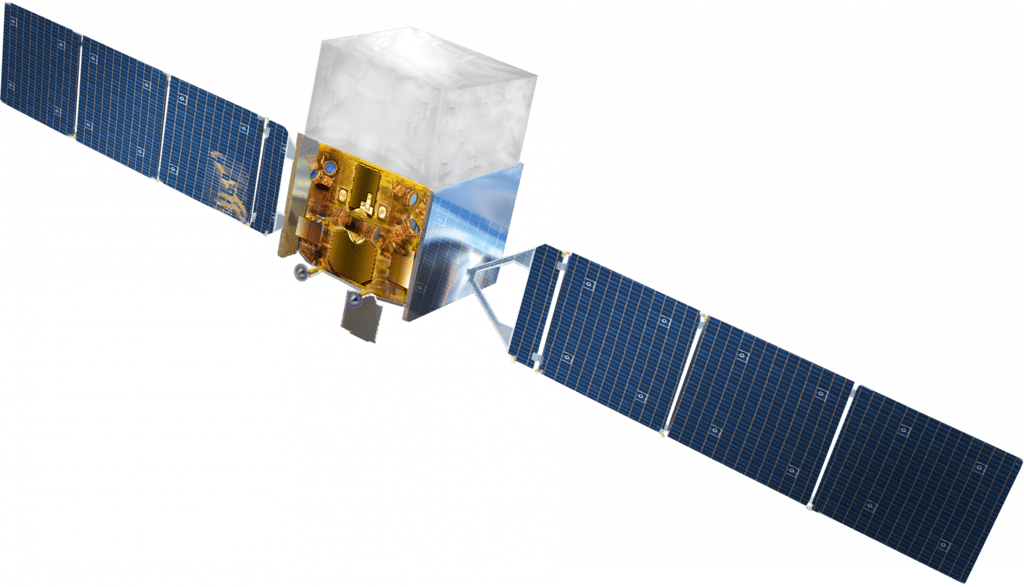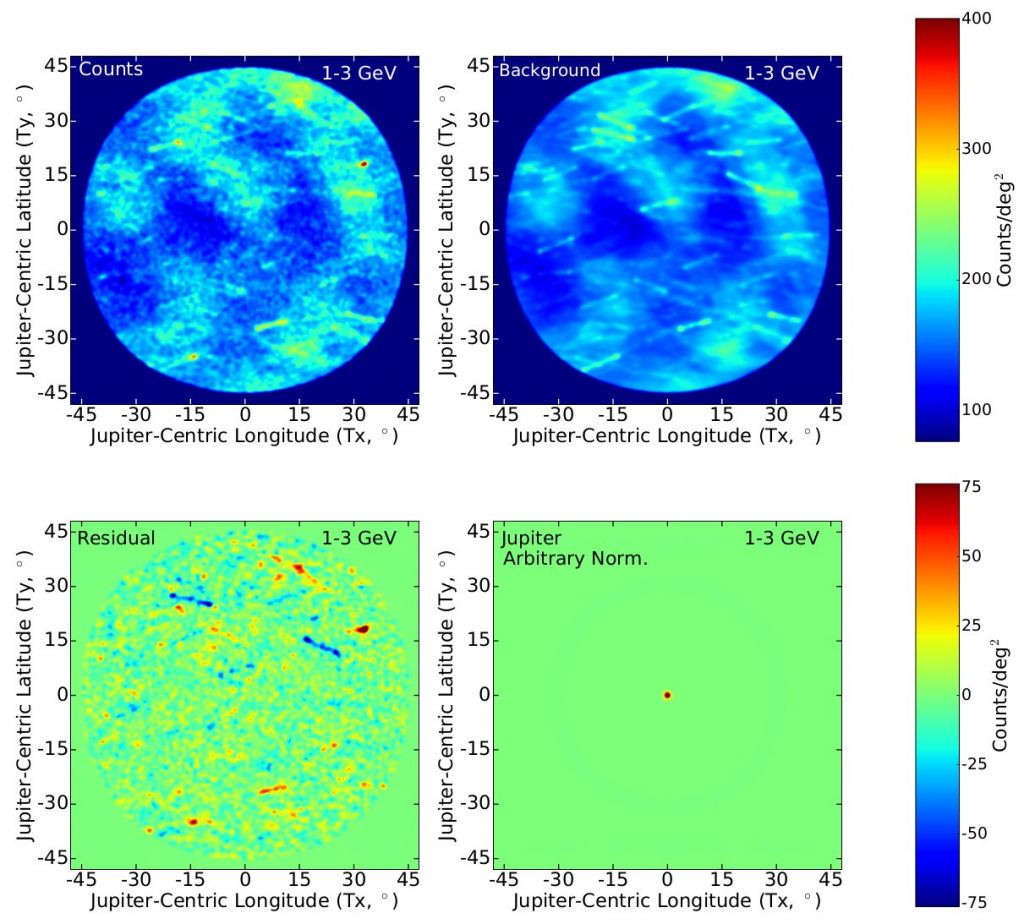So, you want to find dark matter, but you don't know where to look? A giant planet might be exactly the kind of particle detector you need! Luckily, our solar system just happens to have a couple of them available, and the biggest and closest is Jupiter. Researchers Rebecca Leane (Stanford) and Tim Linden (Stockholm) released a paper this week describing how the gas giant just might hold the key to finding the elusive dark matter.
The nature of dark matter is one of the biggest ongoing mysteries in physics right now. It interacts gravitationally - we can see it holding together galaxies that would otherwise fly apart - but it doesn't seem to interact with normal matter in other ways.
The most popular theories posit that dark matter is some kind of particle that is either too small, or too weakly-interacting, to be easily observed. Particle accelerators and collider experiments have been set up to smash subatomic particles together: researchers hope to see unexpected amounts of energy missing from the resulting collision, which would suggest some unknown particle, possibly dark matter, is escaping the detector. So far, no luck.
But dark matter should be out and about in nature too, and could be gravitationally captured by objects with large gravity wells, like Earth, the Sun, and Jupiter. Over time, dark matter could build up inside a planet or star until there is enough density that one dark matter particle might hit another, annihilating both. Even if we cannot see dark matter itself, we should be able to see the results of such a collision. It would produce high-energy radiation in the form of Gamma rays.
Enter NASA's Fermi Gamma-ray Space Telescope, launched in 2008 on a Delta II rocket. It's been examining the sky for sources of gamma rays for over a decade now. Researchers Leane and Linden used the telescope to look at Jupiter, and produced the first-ever analysis of the giant planet's gamma-ray activity. They hoped to see evidence of excess gamma rays created by dark matter annihilation inside Jupiter.
As Leane explains, Jupiter's size and temperature make it an ideal dark matter detector. "Because Jupiter has a large surface area compared to other solar system planets, it can capture more dark matter… You might then wonder why not just use the even bigger (and very close by) Sun. Well, the second advantage is that because Jupiter has a cooler core than the Sun, it gives the dark matter particles less of a thermal kick. This in part can stop lighter dark matter from evaporating out of Jupiter, which would have evaporated out of the Sun."
Leane and Linden's initial study of Jupiter did not find dark matter just yet. However, there was one tantalizing gamma-ray excess at low energy levels, which is going to require better tools to properly study. "We are really stretching Fermi's limits to analyze such low energy gammas," said Leane. "Looking forward, it will be interesting to see if upcoming MeV gamma-ray telescopes such as AMEGO and e-ASTROGAM find any Jovian gamma rays, especially at the lower end of our analysis, where Fermi's performance suffers. Maybe Jupiter still has some secrets to share…"
Both the AMEGO and e-ASTROGRAM telescopes are still in the concept stage, but they may just be the tools needed to find dark matter, and Jupiter just might be the target object in which to find it.
Leane and another colleague, Juri Smirnov (Ohio State), think that a similar technique could also be used to look for dark matter in Jupiter-like exoplanets or cool brown dwarf stars.
Exoplanets and brown dwarfs closer to the center of the galaxy, where there are higher densities of dark matter, should appear hotter in infrared than planets and stars further away, due to more frequent dark matter annihilation in their cores. The James Webb Space Telescope might be able to provide an infrared survey of enough planets to corroborate this theory.
Whether we find evidence of dark matter in an exoplanet, or in our own gas giant close to home, such a discovery would mark a big leap forward in our model of the universe. There's no guarantee of either, but it's certainly worth a look, and the groundwork for the search is being laid right now.
The research papers can be found here:
- Rebecca Leane and Tim Linden, " First Analysis of Jupiter in Gamma Rays and a New Search for Dark Matter." ArXiv preprint.
- Rebecca Leane and Juri Smirnov, " Exoplanets as New Sub-GeV Dark Matter Detectors. " ArXiv preprint.
Featured Image Credit: NASA/JPL-Caltech/SwRI/MSSS/Kevin M. Gill (Wikimedia Commons).
 Universe Today
Universe Today


